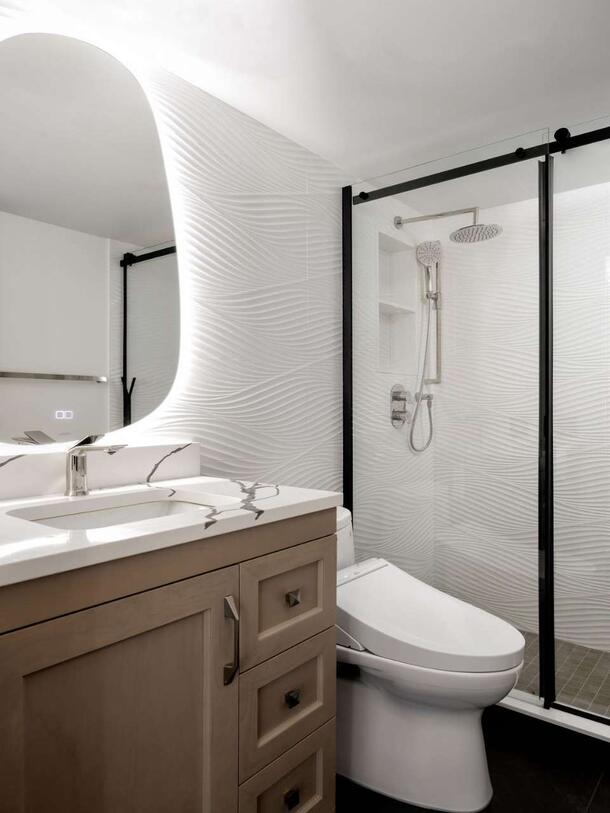When it comes to choosing the right freestanding bathtub one of the most crucial factors to consider is the size available in your bathroom.
Keep a few things in mind if you're changing your bathtub because you want a larger model or because you want to swap it out for a whirlpool or deep soaking tub. Are you able to sit comfortably in the new model? Will it fit in your bathroom's available space? Will it pass through the doors you currently have? Most bathroom flooring can support 40 pounds of weight per square foot, so keep that in mind. In order for the floor to sustain a large-capacity tub when it is filled with water, additional bracing could be needed.
Tub designs:
There are four fundamental designs for both regular and Whirlpool bathtubs:
Alcove tubs: A recessed tub that is placed between two end walls and up against a rear wall, with a single completed location known as an alcove. Your plumbing requirements are met by a drain at each end. It could be challenging for people with restricted mobility to enter and exit these baths.
Tubs in corners. Like regular alcove tubs, space-saving corner tubs only have one finished side and fit diagonally between two corners. Some corner alternatives have one round, finished end and one finished side.
Tubs that stand alone. These tubs may be positioned practically anywhere in the room because they are completed on all four sides. Classic and historical baths look good with clawfoot types. Additionally, there are more recent designs that appeal to modern design, including pedestal designs.
Drop-in: A platform is where drop-in bathtubs fall. Whether the tub should be placed in the middle of the room, against a long wall, or in a corner depends on the platform's design.
Tub materials:
Dolotek. Dolomite. A high-tech stone resin and mineral filler substance that produces a smooth, matte white surface that is pleasing to the touch.
Acrylic. continues to be the most chosen option. Versatile, it retains heat well, is easy to clean, and can be molded into nearly any shape. It won't fade and is long-lasting.
Steel that has been enameled. The application of porcelain on cast iron and steel is still rather common. They lose heat more quickly than acrylic, but they are less expensive. When they get worn, they may be resurfaced and are simple to clean.
Fiberglass. A coating of polyester is applied to the backing material to complete it. The tub is reinforced with metal or wood to give it a sturdy feel.
Steel that has been enameled. The application of porcelain on cast iron and steel is still rather common. They lose heat more quickly than acrylic, but they are less expensive. When they get worn, they may be resurfaced and are simple to clean.
Design tips:
According to the National Kitchen and Bath Association, a hot water heater's capacity should be at least two-thirds that of the tub's: For example, a 90-gallon tub can be effectively served by a 60-gallon hot water tank, but the rest of the water in the house will be chilly.
Rectangular, oval, or even asymmetrical shapes are the most common in terms of shape and design. Make sure the user is comfortable and the size fits the bathroom.
Match the tub's color and finish to the general style of the bathroom; white and matte black are popular options right now.
We can assist you if you need ideas, more specifics about installing a bathtub, or information about the items in our showroom.








